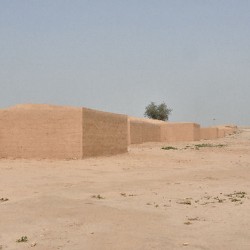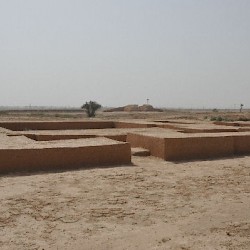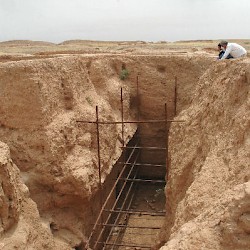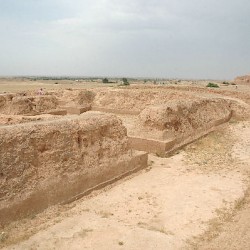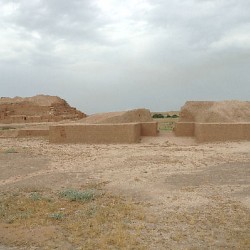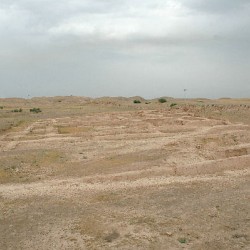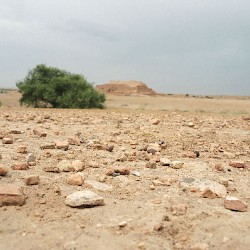Choga Zanbil - Outer Court
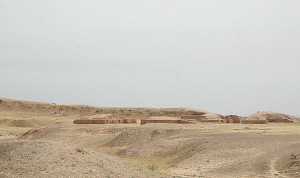
Beyond the inner court of Dur Untaš was he outer court, measuring about one square kilometer and surrounded by a four kilometer wall (called "outer temenos wall" by the excavators). On this outer court, between the inner and the outer temenos walls, one could also find several temples, especially in the eastern corner. They were dedicated to Napratep, Shimut and Nin Ali, Shalu, and Pinikir.
Outside the outer temenos wall, situated in the eastern part of the city, was the royal palace, which seems to have consisted of three large houses, a spacious court, and a big gate. The palace was, therefore, of the normal Near Eastern type: many rooms surrounding big courts, built inside a city, against the wall. A temple, dedicated to the Babylonian god Nusku, completed this part of the city.
As was customary in the Near East, the tombs of the kings were underneath the palace. Although a skeleton has been found, most people had been cremated; as far as we know, this is the only place in Elam where the dead bodies were burnt.
It comes as no surprise that the palace and the tombs were of the Near Eastern type, because culturally, the ancient Elamites were very close to the Babylonians. The monument for which Choga Zanbil is famous, its ziggurat, is not an Iranian architectural form but was developed in southern Mesopotamia.
